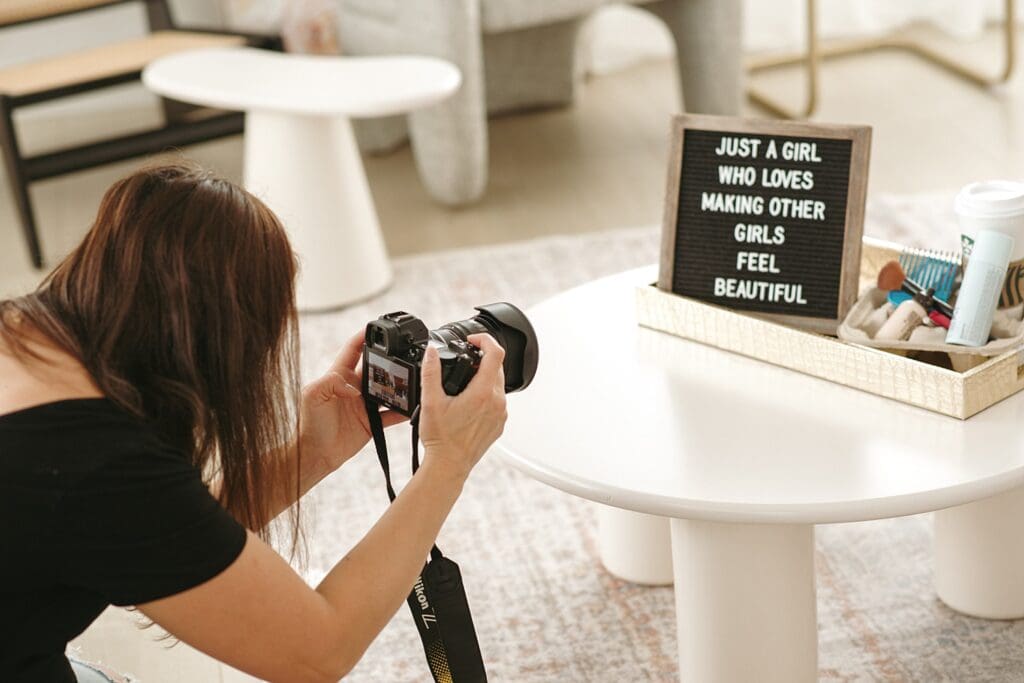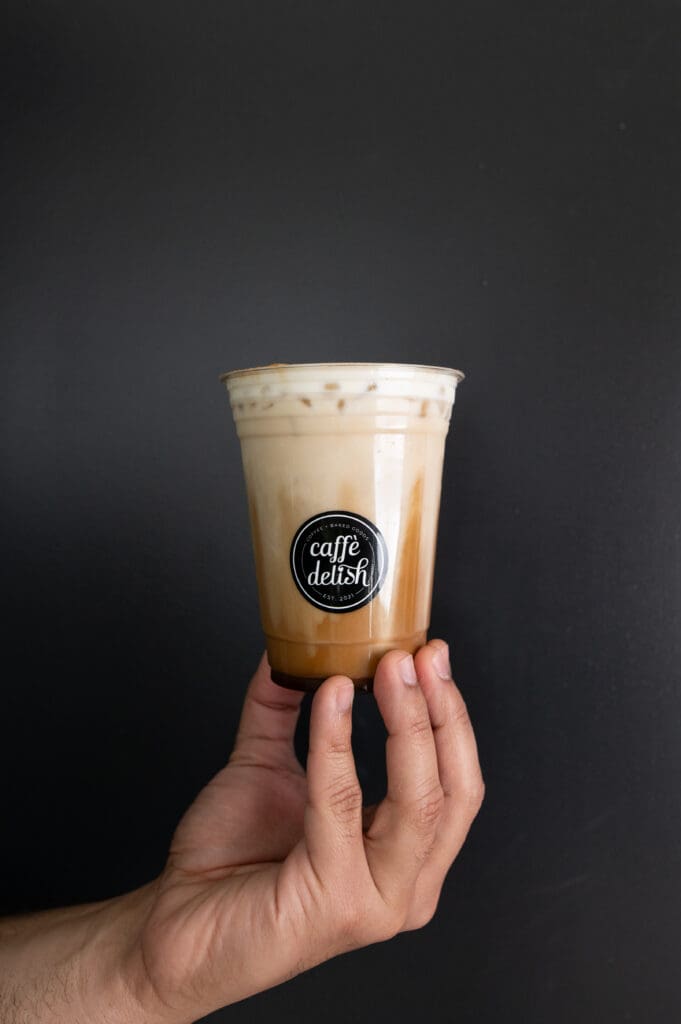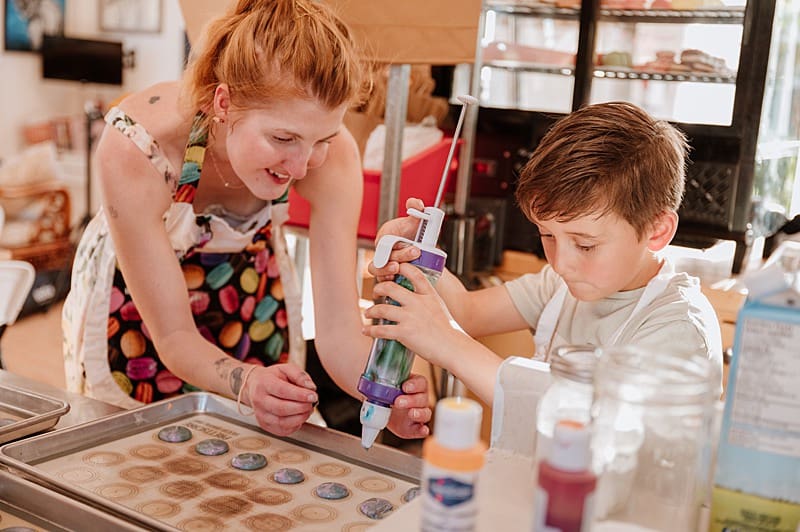
When most people hear commercial photography, they picture billboards or magazine ads. But in reality, it’s much broader — and far more essential for modern businesses of every size.
From lifestyle imagery that brings your product to life, to professional portraits that put a face to your brand, commercial photography is the visual backbone of your marketing. It’s what helps people feel your story before they ever read a word.
As someone who’s worked with dozens of local businesses — from boutique cafes to creative entrepreneurs — I’ve seen firsthand how intentional imagery can completely shift how a brand is perceived. This post will break down what commercial photography really is, what’s included, and how it can move your business forward.
1. What Is Commercial Photography?
At its core, commercial photography is any type of imagery created for business use — to promote, advertise, or visually represent a product, service, or brand.
It’s not about snapping pretty pictures. It’s about strategy — crafting visuals that align with your goals, speak to your audience, and reinforce your brand identity across every touchpoint.
Common types include:
- Product Photography – showcasing your products in clean, compelling ways that make people want to buy.
- Lifestyle or Brand Photography – showing your product or service in action to help clients imagine themselves using it.
- Corporate Headshots & Team Photos – helping your audience connect with the real humans behind the business.
- Architectural or Interior Photography – capturing the spaces where your brand lives and works.
- Social Media & Content Photography – creating cohesive visuals to keep your online presence consistent and engaging.
Think of commercial photography as your visual strategy partner — not just a creative service.

2. Why Commercial Photography Matters More Than Ever
We’re living in an image-driven world. In seconds, your audience decides whether to stop scrolling or keep moving. Professional, brand-aligned visuals make all the difference.
Here’s what happens when businesses invest in commercial photography:

- Increased trust – People connect faster when they can see who you are and what you do.
- Higher perceived value – High-quality visuals communicate professionalism and elevate your brand.
- Better engagement – Strategic imagery keeps your audience’s attention longer, especially on websites and social media.
- Consistency across platforms – Instead of mismatched images or stock photos, you’ll have a cohesive, recognizable look.
When one of my clients, Caffe Delish, expanded from a gluten-free bakery to a café, we built a full gallery of images that captured the textures, warmth, and welcoming feel of their space, highlighting their new coffee offerings. Those photos now define their online presence — and help new customers feel like they’ve already been there before they walk in.
3. What’s Included in a Commercial Photography Session
Every project is a bit different, but most commercial shoots start long before the camera comes out.
Here’s what typically happens:
- Discovery & Strategy – Understanding your brand, goals, and audience so the images tell the right story.
- Creative Direction & Shot Planning – Outlining key visuals, props, wardrobe, and locations to align with your marketing needs.
- Photography Session – This could include product images, behind-the-scenes content, portraits, or lifestyle storytelling.
- Editing & Delivery – Polished, high-resolution images ready for web, print, and social use — typically with full commercial usage rights.
When I work with clients through Kindred Brand Imagery, we start with a brand questionnaire and visual direction board to make sure your images feel authentically you — because no two businesses are alike.
4. How to Choose the Right Commercial Photographer

Hiring the right photographer is about more than liking their style. You’re choosing someone to translate your brand visually — so trust and understanding are key.
Ask yourself (and them):
- Do they take time to understand your brand before the shoot?
- Can they adapt to different lighting, settings, and visual styles?
- Do they offer guidance on styling, posing, and creative direction?
- Are their licensing terms clear (so you can use your images freely)?
- Does their portfolio show diversity in the types of brands they’ve worked with?
You want a photographer who feels like a collaborator — someone who can see the heart behind your business and bring it to life visually.
5. What Businesses Should Prepare Before Their Session
Preparation makes a world of difference. Before your session, consider:
- Your brand colors and visual tone (clean and minimal, bold and modern, cozy and natural, etc.)
- The main platforms where you’ll use your images (website banners, email, social, print ads)
- Any upcoming campaigns or launches to capture content for
- Outfits, props, or settings that reflect your business identity
I often help clients create a detailed shot list ahead of time — that way, you leave the shoot with content that serves your real marketing needs for months.
6. The ROI of Commercial Photography
While it’s tempting to view photography as an expense, the right imagery is truly an investment. It impacts everything from brand recognition to conversion rates.
Here’s a simple example:
- A polished product photo increases perceived value — which supports higher pricing.
- Lifestyle imagery helps customers connect emotionally, which drives engagement.
- A consistent brand aesthetic improves trust — leading to more repeat clients.
In short, professional visuals make your marketing work harder for you. And when your imagery is rooted in strategy, it’s not just beautiful — it’s profitable.
7. How Commercial Photography Differs from Branding Photography
The terms often overlap, but they serve slightly different goals:
- Brand Photography tells the story of who you are — it’s personal, emotional, and story-driven.
- Commercial Photography focuses on what you sell — the products, services, and tangible aspects of your business.
That said, the strongest marketing strategies usually blend both. You need the emotional connection and the commercial clarity. My shoots often combine lifestyle storytelling with traditional commercial elements to help brands connect and convert.
Let Your Brand Be Seen
Commercial photography isn’t about perfection. It’s about alignment — visuals that feel true to your business, inspire trust, and attract your ideal clients.
Whether you’re a small local business or a growing brand, the right imagery can transform how people see and experience what you offer.
Because in a world full of noise, intentional imagery doesn’t just help you stand out — it helps you be remembered.
About the Author | Kelly Warkentin

Kelly is the founder of Kindred Brand Imagery, a Vancouver-based Branding Photography studio who specializes in creating strategic brand imagery for small business, personal brands and hospitality brands. With 8 years of experience with building her own brand, Kelly helps entrepreneurs who want to stand out, stay true to their values, and actually connect with the people they’re here to serve. When she’s not photographing clients, you’ll find her playing with her three little ones, coffee in hand, or doing some cool things on an aerial silk.
Explore the branding photography process at kindredbrandimagery.com